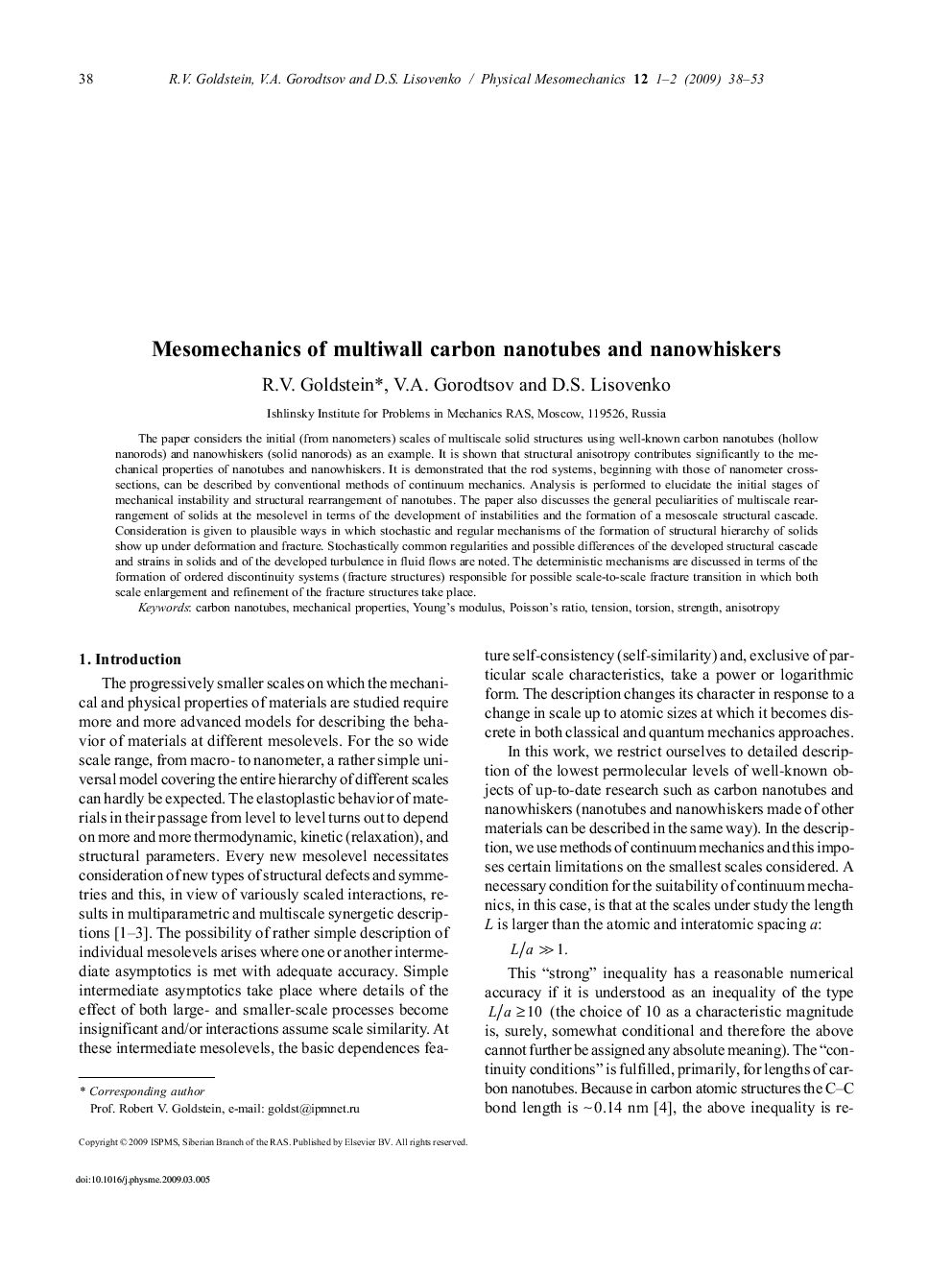| Article ID | Journal | Published Year | Pages | File Type |
|---|---|---|---|---|
| 803810 | Physical Mesomechanics | 2009 | 16 Pages |
Abstract
The paper considers the initial (from nanometers) scales of multiscale solid structures using well-known carbon nanotubes (hollow nanorods) and nanowhiskers (solid nanorods) as an example. It is shown that structural anisotropy contributes significantly to the mechanical properties of nanotubes and nanowhiskers. It is demonstrated that the rod systems, beginning with those of nanometer cross-sections, can be described by conventional methods of continuum mechanics. Analysis is performed to elucidate the initial stages of mechanical instability and structural rearrangement of nanotubes. The paper also discusses the general peculiarities of multiscale rearrangement of solids at the mesolevel in terms of the development of instabilities and the formation of a mesoscale structural cascade. Consideration is given to plausible ways in which stochastic and regular mechanisms of the formation of structural hierarchy of solids show up under deformation and fracture. Stochastically common regularities and possible differences of the developed structural cascade and strains in solids and of the developed turbulence in fluid flows are noted. The deterministic mechanisms are discussed in terms of the formation of ordered discontinuity systems (fracture structures) responsible for possible scale-to-scale fracture transition in which both scale enlargement and refinement of the fracture structures take place.
Keywords
Related Topics
Physical Sciences and Engineering
Engineering
Mechanical Engineering
Authors
R.V. Goldstein, V.A. Gorodtsov, D.S. Lisovenko,
